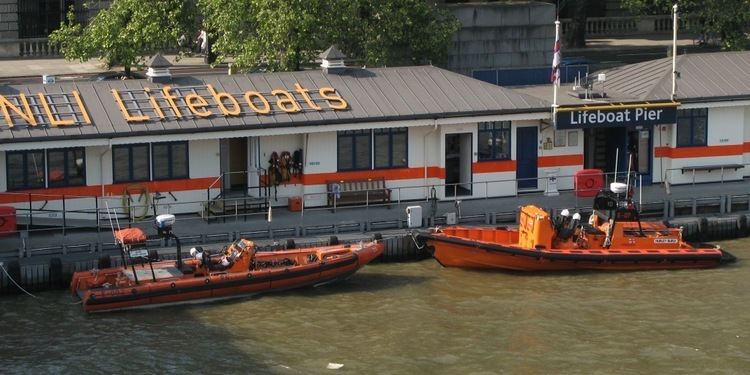Name E-class Displacement 3.86 tonnes | Active 6 Length 9 m (30 ft) | |
 | ||
In service Mark I 2002–2012Mark II 2011– | ||
The E-class lifeboat serves the shores of the United Kingdom as a part of the RNLI inshore fleet. It operates exclusively in the tidal reach of the River Thames in London, and has a top speed of 40 knots.
Contents
Mark I
The boat is made of an aluminium alloy with a closed cell polythene foam collar, and is powered by a Jet Drive that gives the boats extreme maneuverability which is essential to enable crews to reach casualties in the fast flowing river. The boat is 9 metres (30 ft) long and carries equipment including marine VHF radios, a first aid kit, an emergency defibrillator, a GPS navigation system, night vision equipment, a self-righting system, a radar interrogator, towing equipment, and lighting equipment.
The class was introduced in 2002 to serve the tidal reach of the River Thames and the Thames Estuary. This was as a result of a much delayed enquiry into the Marchioness disaster in 1989, in which 51 people died. The enquiry criticised the lack of a rescue service for the tidal Thames, and the UK government asked the Maritime and Coastguard Agency, the Port of London Authority and the RNLI to work together to set up a dedicated Search and Rescue service for this stretch of the river.
There are currently four E class boats in use on the Thames, split between Chiswick Lifeboat Station to the west of central London, and Tower Lifeboat Station at Victoria Embankment in central London. An E class boat also originally operated from Gravesend Lifeboat Station on the estuary to the east of London, but it proved less suitable for the more exposed conditions of the lower estuary so was withdrawn in 2009 and replaced with an Atlantic 85.
With the development of the Mark II, the Mark I will be phased out following the London 2012 Olympics.
Mark II
The E Class Mark II is intended to replace the Mark I after the 2012 London Olympics. They again have a maximum speed of 40 Knots, have a crew of 2-5 people in ergonomically designed seats whilst having a larger deck area for casualties.
The first boat, Hurley Burly, has been on station at Tower since Autumn 2011 whilst two more Dougie and Donna B and Brawn Challenge will operate between Chiswick and Tower in early 2012.
Other
The RNLI also had a valiant RIB which was allocated the fleet number E-01.
